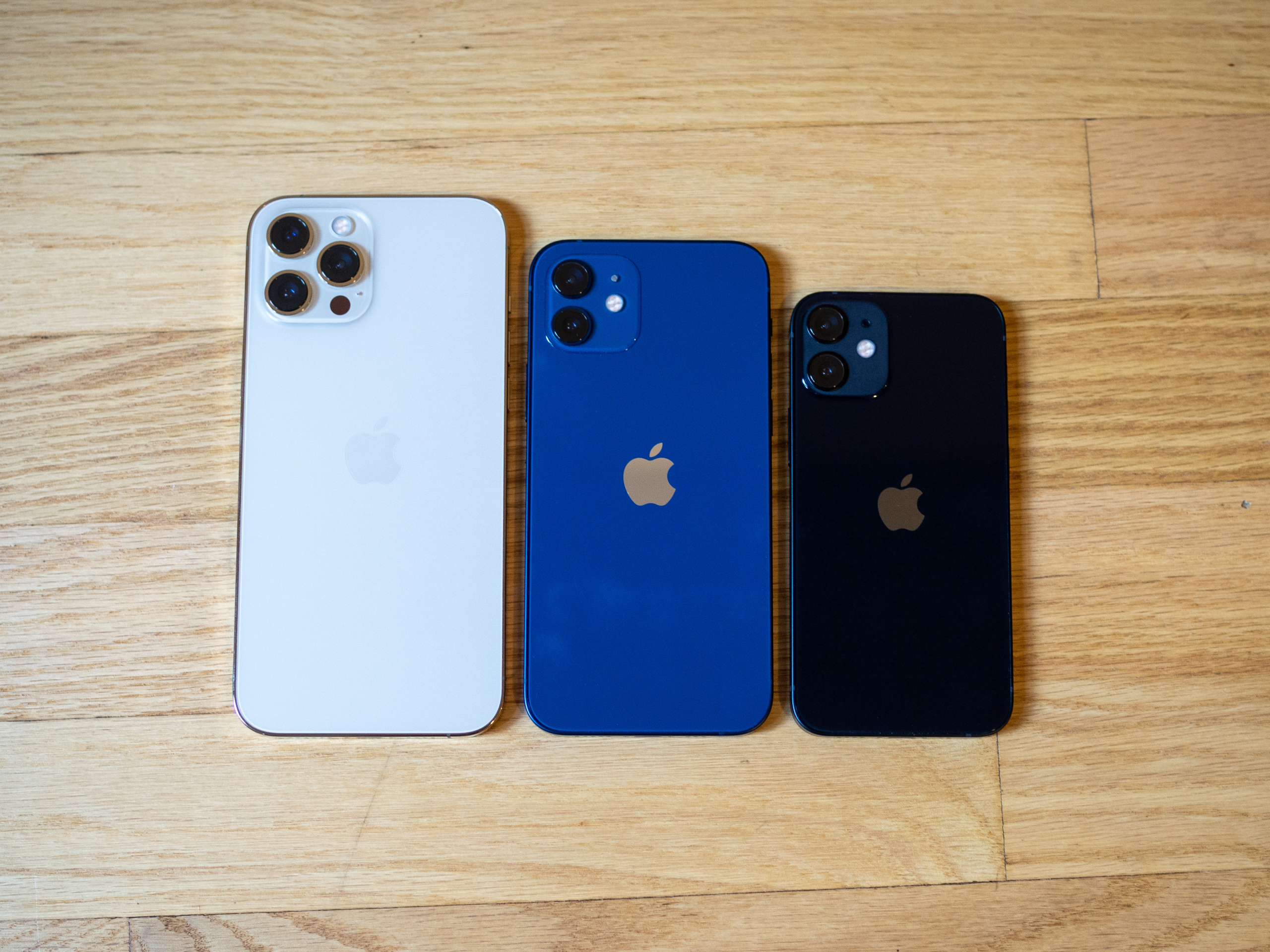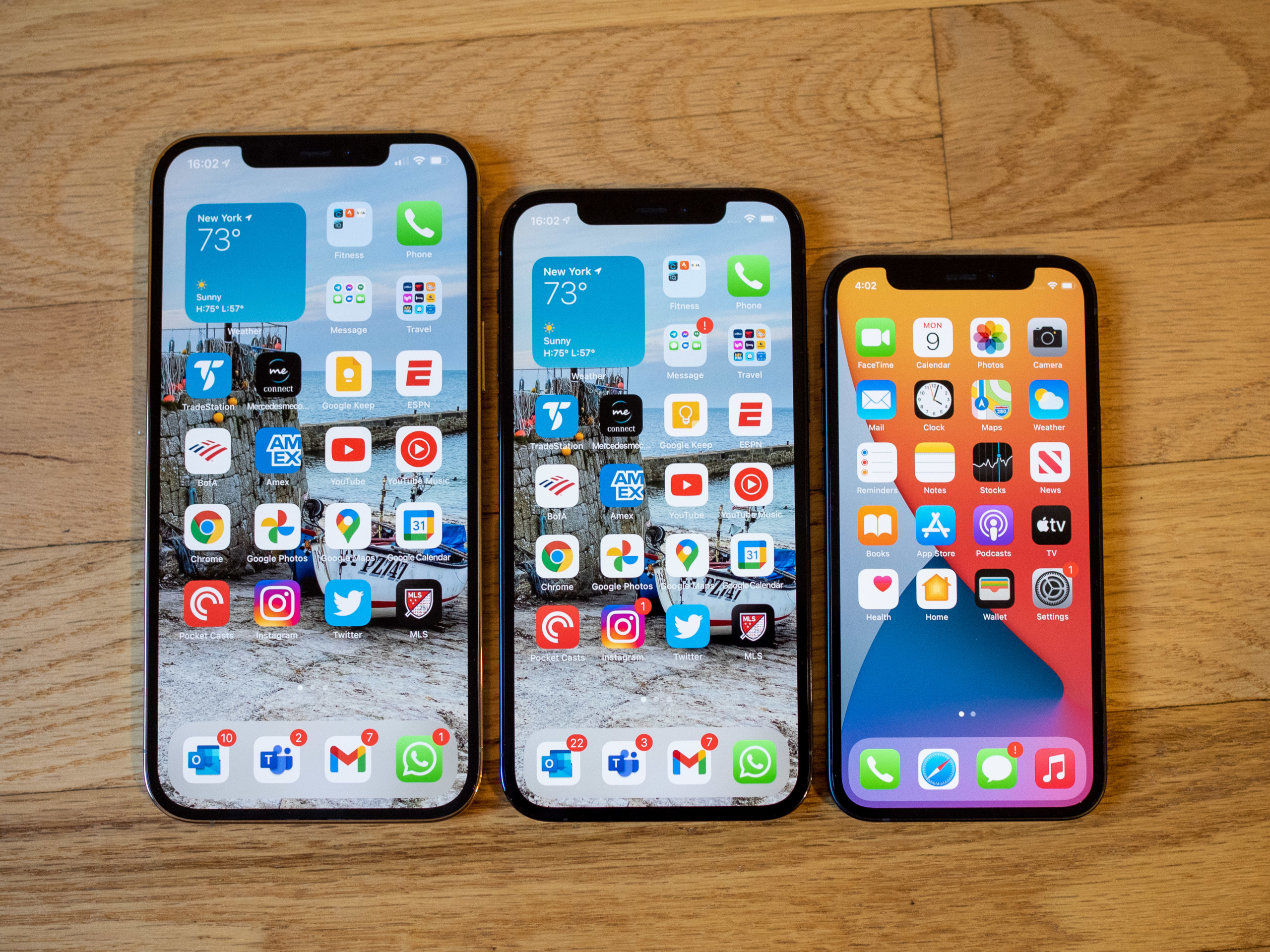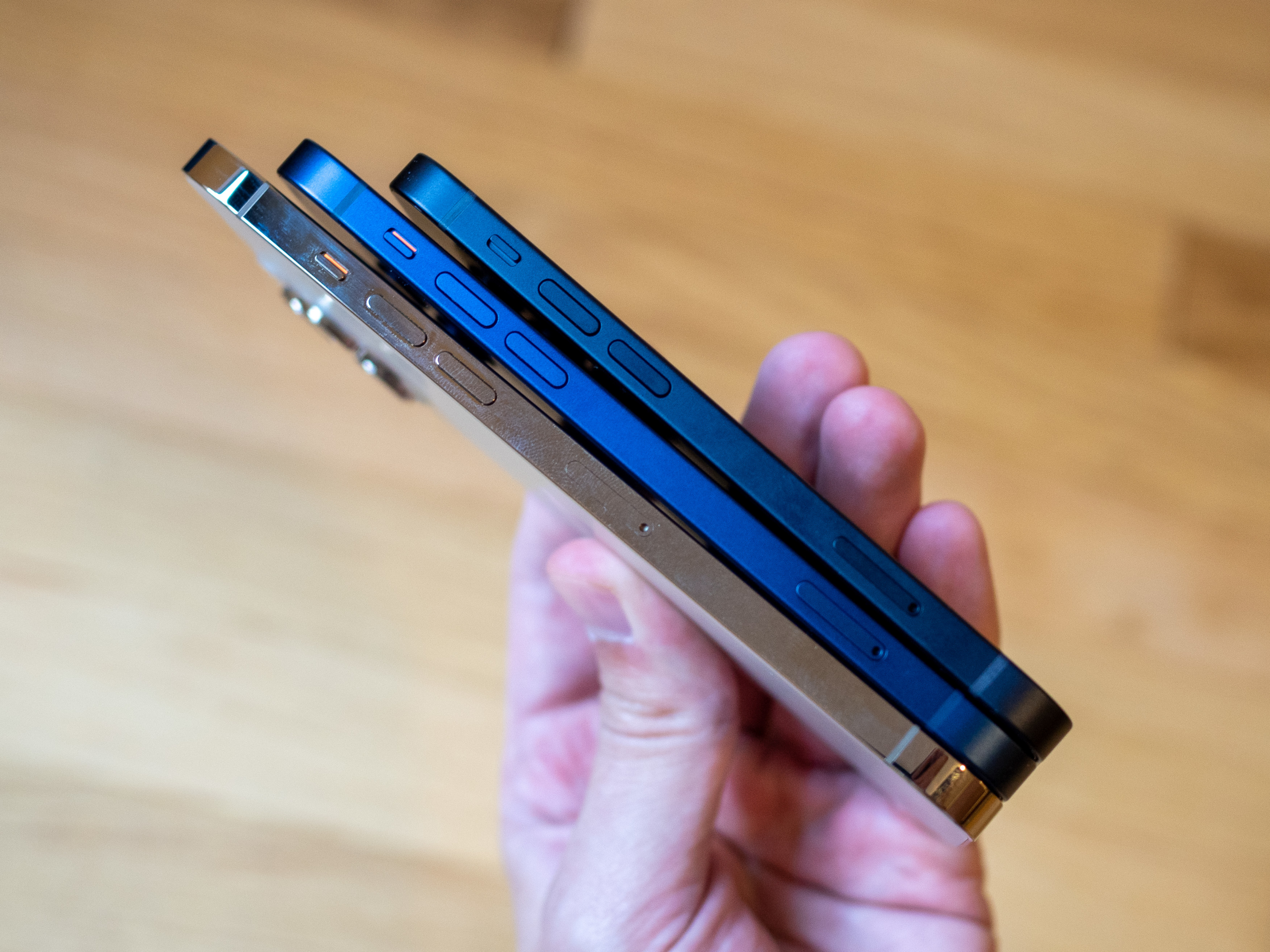Apple’s iPhone 12 lineup is particularly compelling because it addresses a wider range of people’s needs than prior generations. It has four phones in three distinct size categories, and those size differences aren’t superfluous — they’re very tangible jumps from the iPhone 12 Mini, to the 12 and 12 Pro, and then up to the 12 Pro Max.
And unlike previous small and large models, which were oddly compromised or built on an old or lower-quality platform, there’s a surprising amount of consistency to the iPhone 12 lineup. You’re getting the same base design, specs, and features from the little iPhone 12 Mini up to the giant iPhone 12 Pro Max. So now, you can just pick the iPhone size you desire, and not feel like you’re giving up fundamental parts of the experience.

Size breakdown
Let’s quickly break down the sizes. And remember, the iPhone 12 and 12 Pro are the exact same size, so I’ll be using “iPhone 12” as the stand-in for both. I’ll start with the hard dimensions, and go from there.
| iPhone 12 Mini | iPhone 12/12 Pro | iPhone 12 Pro Max | |
| Screen size | 5.4-inch | 6.1-inch | 6.7-inch |
| Height | 131.5 mm | 146.7 mm | 160.8 mm |
| Width | 64.2 mm | 71.5 mm | 78.1 mm |
| Thickness | 7.4 mm | 7.4 mm | 7.4 mm |
| Weight | 135 g | 164 g / 189 g | 228 g |
Starting from the bottom and moving up, the 12 Mini is the most dramatically different in size. It’s just 89% the height and width of the 12, and 82% its weight. Being able to wrap your hand around the 12 Mini is amazing, because that just isn’t something we’ve been able to do with most phones lately. It’s even better when paired with the light weight, which is exaggerated considering the full-sized iPhone 12 itself is very light. The identical thickness and hardware finish are somehow even more special in this tiny object.
The iPhone 12 Mini is even considerably smaller than the new iPhone SE (and therefore, the iPhone 8), which is a real accomplishment. Not just because you’re getting more screen in a smaller size — that’s pretty easy with the small bezels and no Touch ID — but because the 12 Mini is dramatically more powerful, and has full 5G support, with a better display, and much more capable cameras.
I’ve gone extensively into the size and feel of the iPhone 12 in my review, but since I’m talking about relative sizes here, it’s worth reiterating how it feels. Even though it has a solid screen size at 6.1-inches, the smaller bezels and flat edges make sure it’s still a very manageable size. I never found the iPhone 12 to be either overwhelming or constraining. It’s a really great size for the “default” phone choice.

That then opens up the top-end: The iPhone 12 Pro Max. The 12 Pro Max is just over 9% taller and wider than the 12 Pro, and a seriously hefty 20% heavier (and 39% heavier than the 12!). When you scale its stainless steel construction (shared with the 12 Pro) up to this size, the weight gets out of hand pretty quickly. If you already have an iPhone 11 Pro Max or XS Max, the size won’t be shocking to you — but in the latter case, you will be looking at a nearly 10% weight bump.
For Max lovers, the 12 Pro Max will be even more appealing because it has a larger 6.7-inch display — and my oh my, what a display! — without a considerable difference in overall size. There’s also the core feature most people buy a Max for: Much longer battery life. And for once, it also has a serious feature improvement beyond the size: A new camera. The 12 Pro Max’s main camera is an entirely new sensor that promises improved low-light performance.
But I’m generally not a Max lover because it’s so dang big, and I find the iPhone 12 Pro Max just as unwieldy as its predecessors. As much as I love looking at that display, it’s tough to manage one-handed even in my large hands. Thankfully, the “reachability” gesture brings everything down so you don’t have to shift it in your hand much, but even still, this thing is tough to deal with. It’s truly a two-handed device — and once you come to terms with that, you’ll probably enjoy it more.
If you already have and love an XS Max or 11 Pro Max, you’ll be able to buy a 12 Pro Max online because you know what to expect, but if you have any of the smaller models and are considering an upgrade, you really should see this thing in person before buying. Buy the iPhone 12 Pro Max because you like big phones, not because you’re enticed by its battery and camera improvements.

It’s refreshing to see so much choice in the iPhone lineup, after a few different iterations of having the appearance of choice but really facing a lot of tough decisions and compromises. You used to have to choose between getting the size you want and giving up core capabilities, but that just isn’t the case anymore.
The iPhone 12 Mini is a mighty device in an incredibly small package, and the iPhone 12 Pro Max brings something new to the table for those who open up their wallets and hands to a huge phone. And right in the middle, the iPhone 12 and 12 Pro still deliver a fantastic balance of size and capabilities for most people to choose and be very happy with.
Editors' Recommendations
- This one Apple Fitness feature completely changed how I exercise
- An Apple insider just revealed how iOS 18’s AI features will work
- iPhone 16: news, rumored price, release date, and more
- iPhone SE 4: news, rumored price, release date, and more
- 3 reasons why I’ll actually use Anker’s new iPhone power bank




